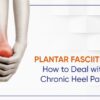Tobacco use over a long period of time has been connected to cardiovascular and respiratory disorders. Smoking, on the other hand, is a proven predictor of poor musculoskeletal health. When someone starts smoking cigarettes at a young age or has indirect contact with tobacco smoke for a long period, the danger is greater. The impact of smoking on musculoskeletal health, especially bone health, will be discussed in this article.
The effects of smoking on the bones
Cigarette smoking is frequently linked to osteoporosis, a disorder characterized by brittle and fragile bones. Tobacco smoke has an impact on vitamin D levels, calcium absorption, hormone metabolism, body weight, and blood flow. It also causes oxidative stress by interfering with reabsorption and the production of new bones. All of these variables increase the risk of osteoporosis in smokers over time. Smokers have a 25% greater risk of fractures and a 50% higher likelihood of hip fractures when compared to nonsmokers. Smokers often have problems with delayed bone repair after fractures and surgery.
Bone density and smoking
Cigarette smoke contains compounds that interfere with the body’s capacity to absorb calcium from food, leading to low bone mineral density. Calcium is required for bone mineralization, and smokers’ bones become weak due to reduced absorption. A study also found that men and women who smoked for a long time had osteopenia or osteoporosis, low back pain, lower estrogen levels, and poorer cortical thickness, particularly in young men.
The link between smoking and the development of rheumatoid arthritis
Smoking has an impact on the joints, cartilage, blood flow to bones, and other body parts, resulting in joint pain and autoimmune illnesses. According to research conducted by the American Academy of orthopedic Surgeons,smokers are more likely to develop inflammatory diseases such as rheumatoid arthritis and systemic lupus erythematosus. In people with a hereditary susceptibility to autoimmune illnesses, even light smoking has been shown to increase the risk of rheumatoid arthritis. Regular smoking, on the other hand, is known to significantly raise the risk of autoimmune illnesses and a variety of malignancies. Furthermore, smoking affects the efficacy of rheumatoid arthritis medications, making therapy more challenging.
Soft tissue damage and fractures are linked to smoking.
Smoking has an effect on bone-forming cells, as well as other tissues in the musculoskeletal system. Smokers are more likely than non-smokers to suffer from soft tissue injuries, sprains, fractures, and back difficulties, with rotator cuff rips and overuse injuries like bursitis and tendonitis being particularly common. In addition, because of poor blood circulation, the recovery of soft tissue injuries, sprains, and fractures is delayed and prone to recurrence. According to studies, 30–40% of elderly men and women who smoke cigarettes are at risk for hip fractures as a result of small falls.
Smoking has an impact on body weight and physical performance.
Maintaining a healthy BMI provides numerous health advantages, including improved musculoskeletal health. Smokers, on the other hand, tend to have a low BMI and a frail skeletal frame. It’s because smoking prevents important elements and minerals from being absorbed. Furthermore, nicotine and other compounds found in tobacco have been shown to transmit messages to the brain, telling it to eat less. Smokers are more likely to develop osteoporosis and fractures as a result of all of these factors. Athletes’ performance can be harmed by smoking because it impairs blood flow and lung function. As a result, the muscles are deprived of oxygen, resulting in weariness, breathing issues, and trouble running or walking.
What effect does passive smoking have on bone health?
Passive smoking, according to growing data, has an equal impact and can increase the risk of a variety of diseases in those who do not smoke but are subjected to tobacco smoke, like women and children. Sinus cancer, throat cancer, laryngeal cancer, breast cancer, a decrease in lung function, and chronic obstructive pulmonary disease are among the conditions. According to the Young Finns Cardiovascular Risk Study, children who were exposed to tobacco smoking during their growing years had poor bone health and a greater risk of developing osteoporosis as adults. Extensive exposure to tobacco smoke directly affected bone density and interfered with bone formation in growing rats, according to additional research. As a result, it can be inferred that passive tobacco smoke is just as dangerous as active tobacco smoke.
Some of the few successful methods for quitting smoking are
Several studies have demonstrated that stopping smoking reduces the incidence of fractures by a certain amount. Nevertheless, this may be easier said than done, which is why we’ve compiled a list of successful smoking cessation methods.
Choose a date. Set a date for quitting smoking and stick to it. It’s the first step in challenging the mind and body while also honouring the promise to start a healthy habit.
Control smoking triggers and urges: Instead of cigarettes, try a glass of water, nourishing beverages, juices, nicotine gums, candies, fruit, or a snack to control smoking triggers and urges, also known as a nicotine rush. Also, develop better methods to de-stress and engage oneself in order to handle stress and social smoking with friends.
Use nicotine replacement therapy if you’ve been smoking for a long time and are experiencing severe withdrawal symptoms. Nicotine replacement therapy is advised for such people.
Breathing exercises and meditation can help you naturally de-stress and moderate mood fluctuations induced by quitting smoking.
Get some behavioural support. Some studies suggest that, in addition to medicine, telephonic assistance and expert counselling might help people quit smoking, especially if they are experiencing withdrawal symptoms.
Start exercising in the morning. Exercising will keep you fit and release pain- and stress-relieving hormones like endorphins and serotonin. Exercising in the fresh air can offer vitamin D, which is necessary for calcium absorption, as well as improve lung function.
A daily reminder of the advantages Reminding oneself that quitting smoking has benefited and enabled a healthier existence might make one feel better. Some of the benefits that one might remind oneself of include improved breathing, good blood circulation, a lower chance of heart disease, and preserving bone density to prevent osteoporosis and fractures.
Conclusion:
Smoking is harmful to musculoskeletal health, and people may feel lower back and joint pain without realising that smoking is a contributing factor. Cigarette smoking can cause soft tissue injuries, rheumatoid arthritis, osteoporosis, and surgery, as well as hinder bone healing. Passive smokers are also at a higher risk of developing osteoporosis and bone abnormalities in growing children. As a result, one should tell their partners, coworkers, and friends not to smoke in order to avoid infections. Moreover, smokers who have been smoking for a long time and are having difficulty stopping should seek professional assistance and family support.
The Tambaram Medical Centre is here to support you in your journey towards a smoke-free life. Contact us today to learn more and take the first step towards a healthier, happier life!










